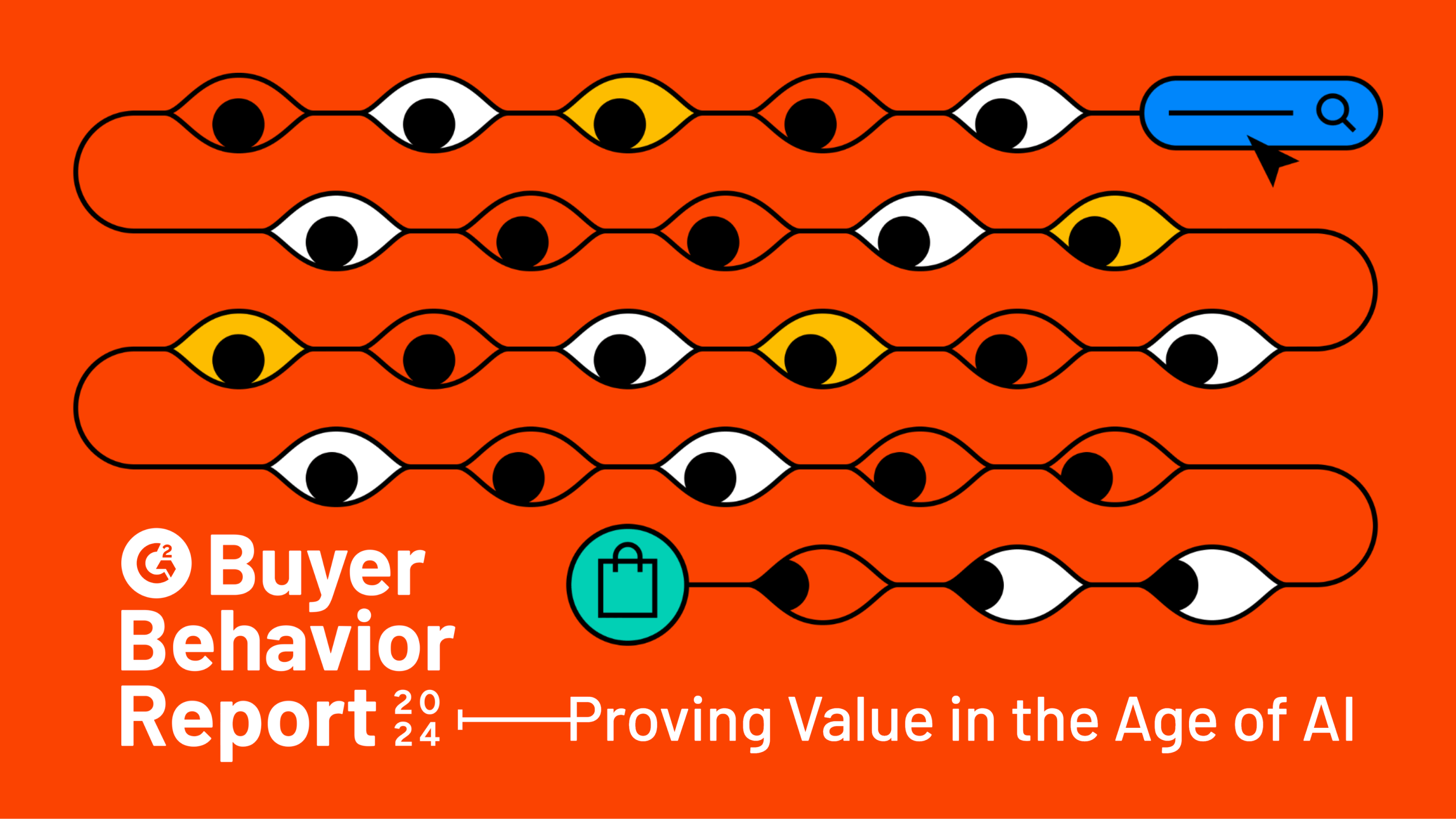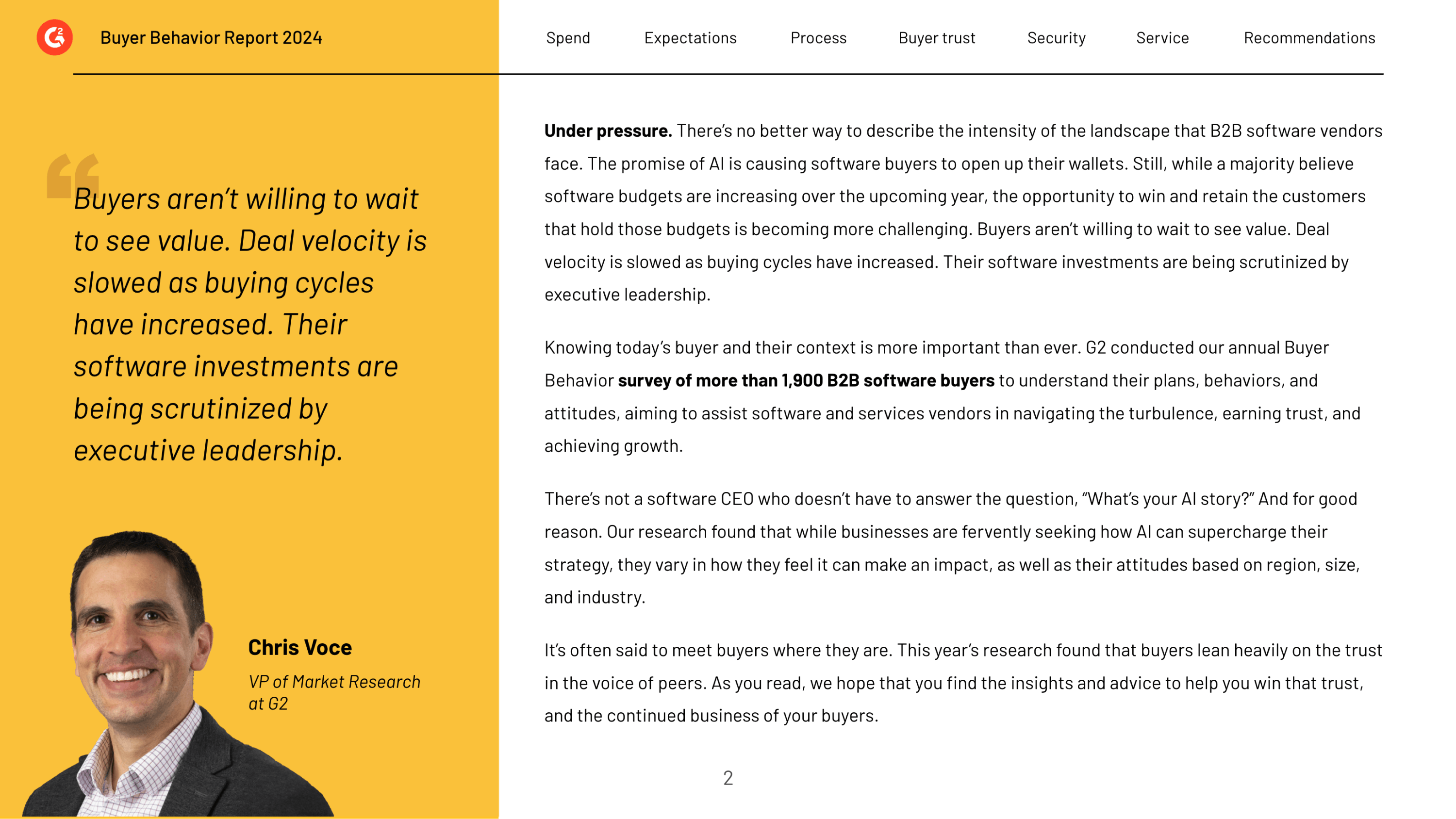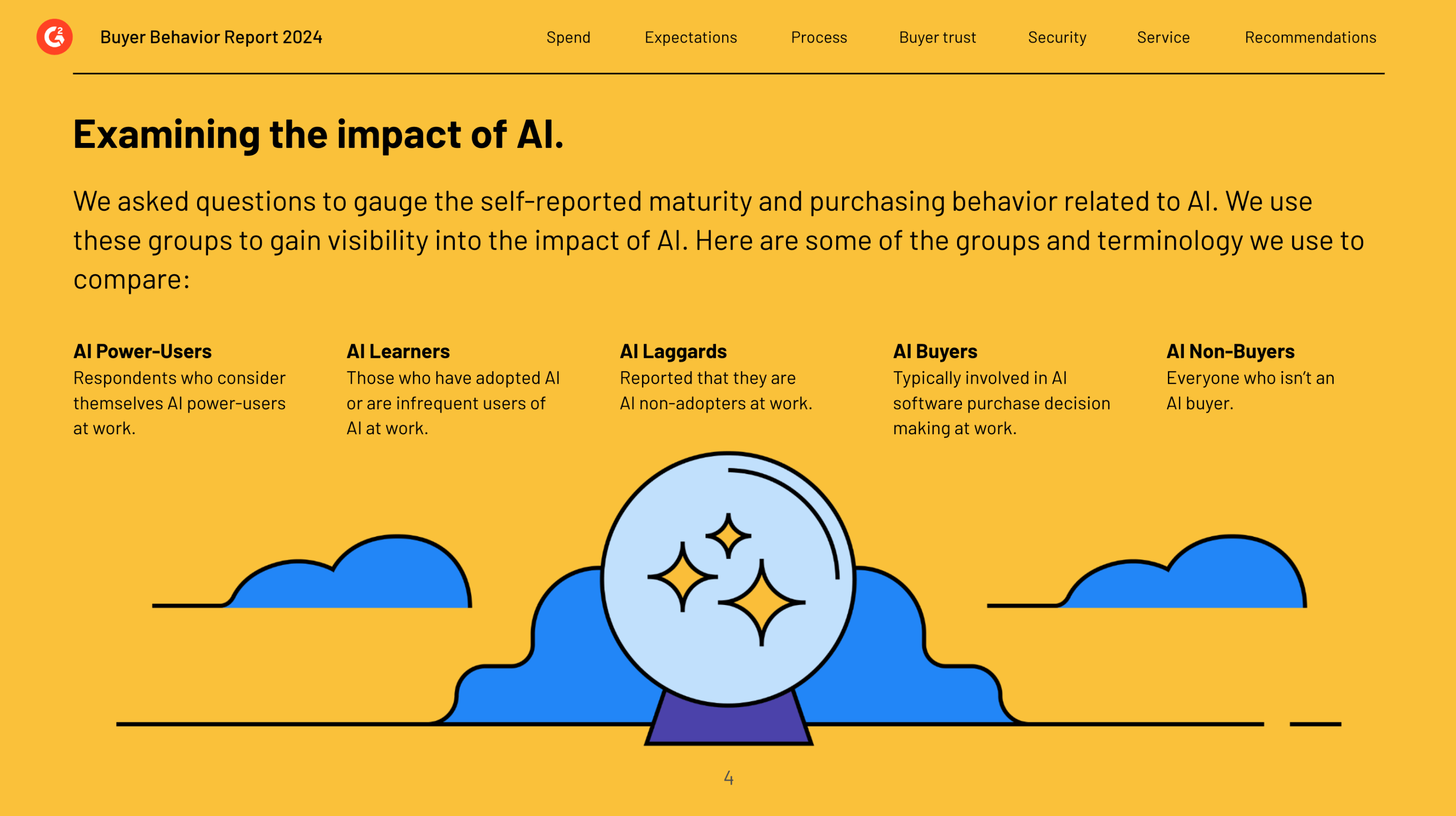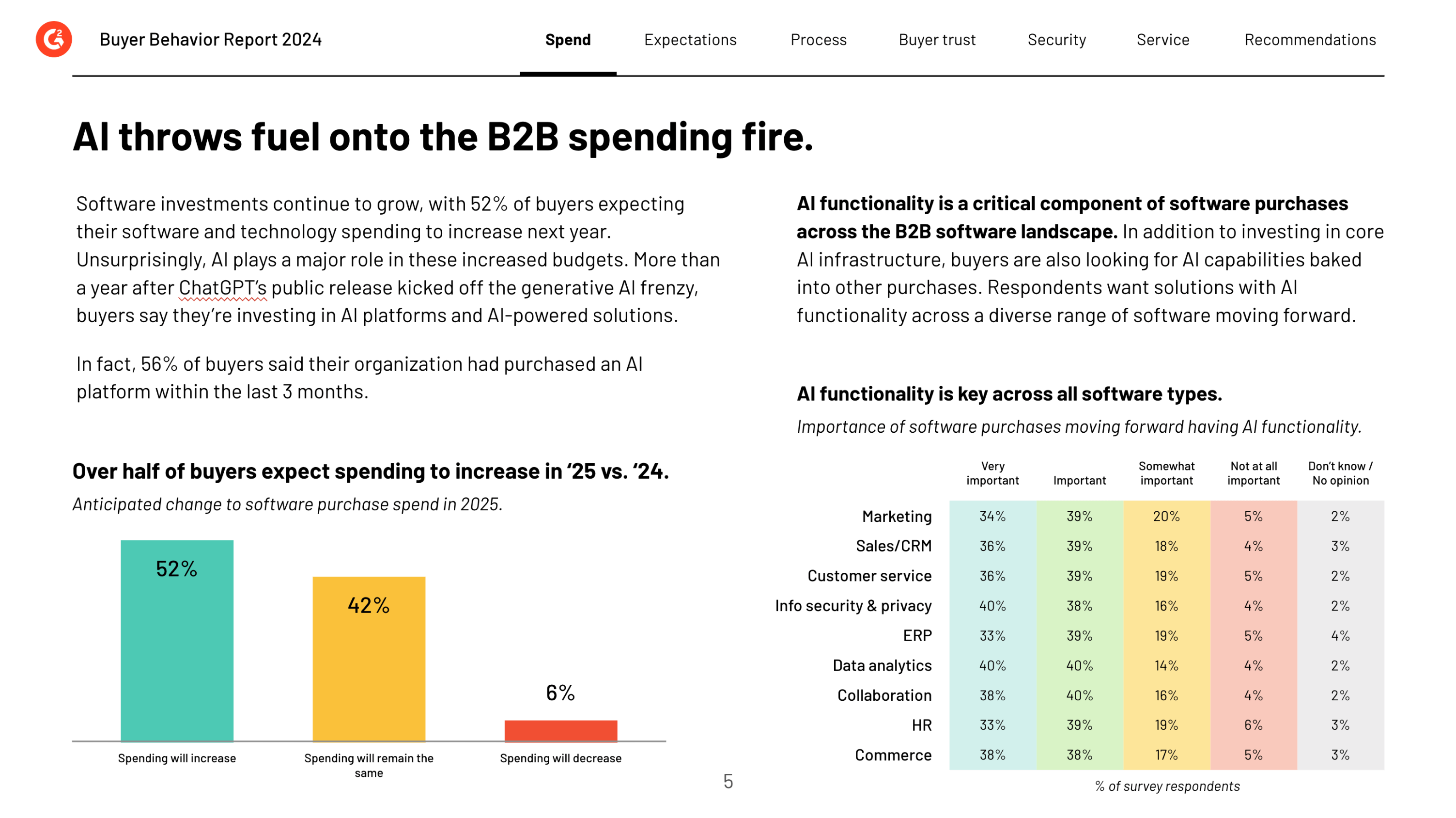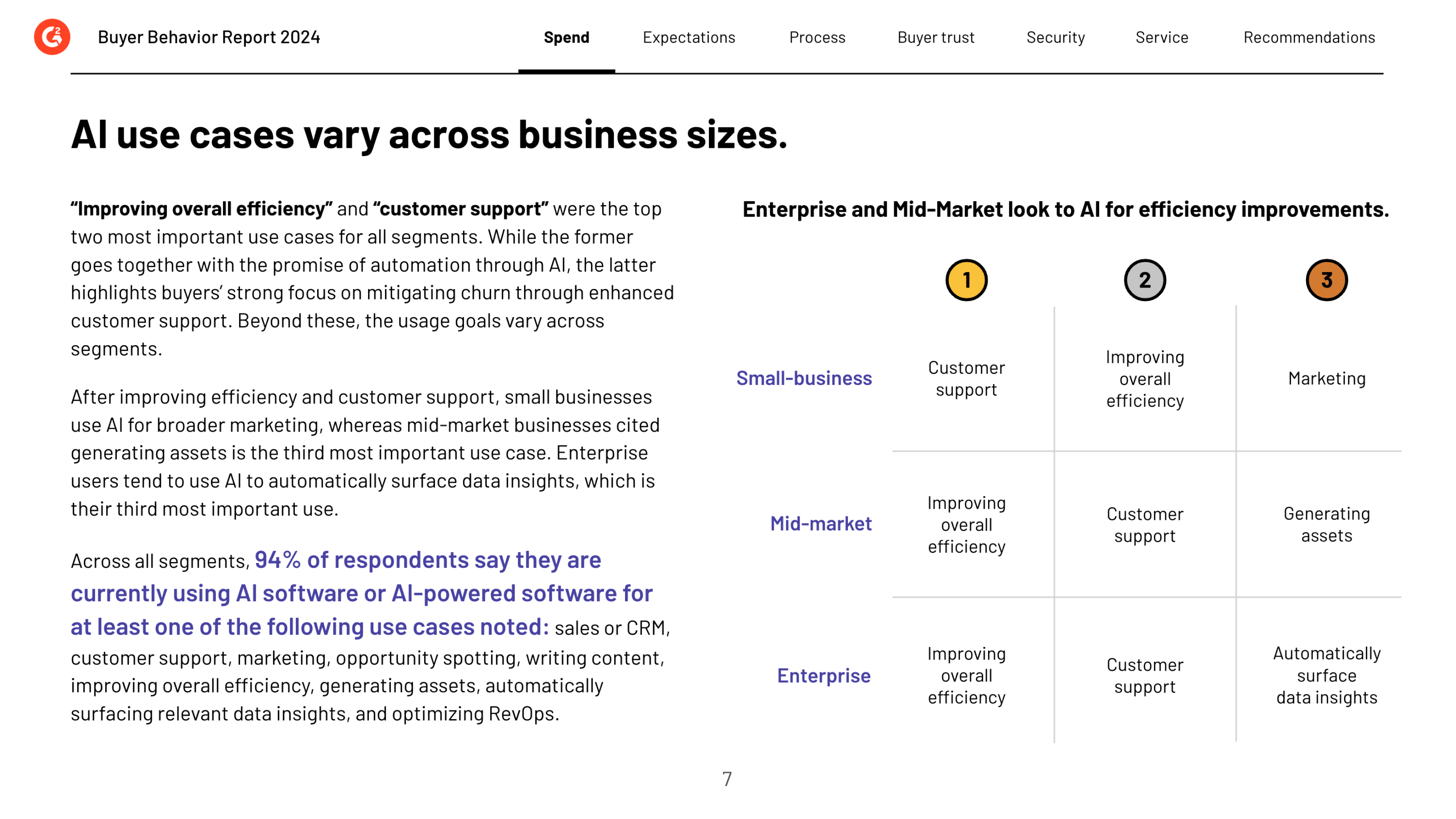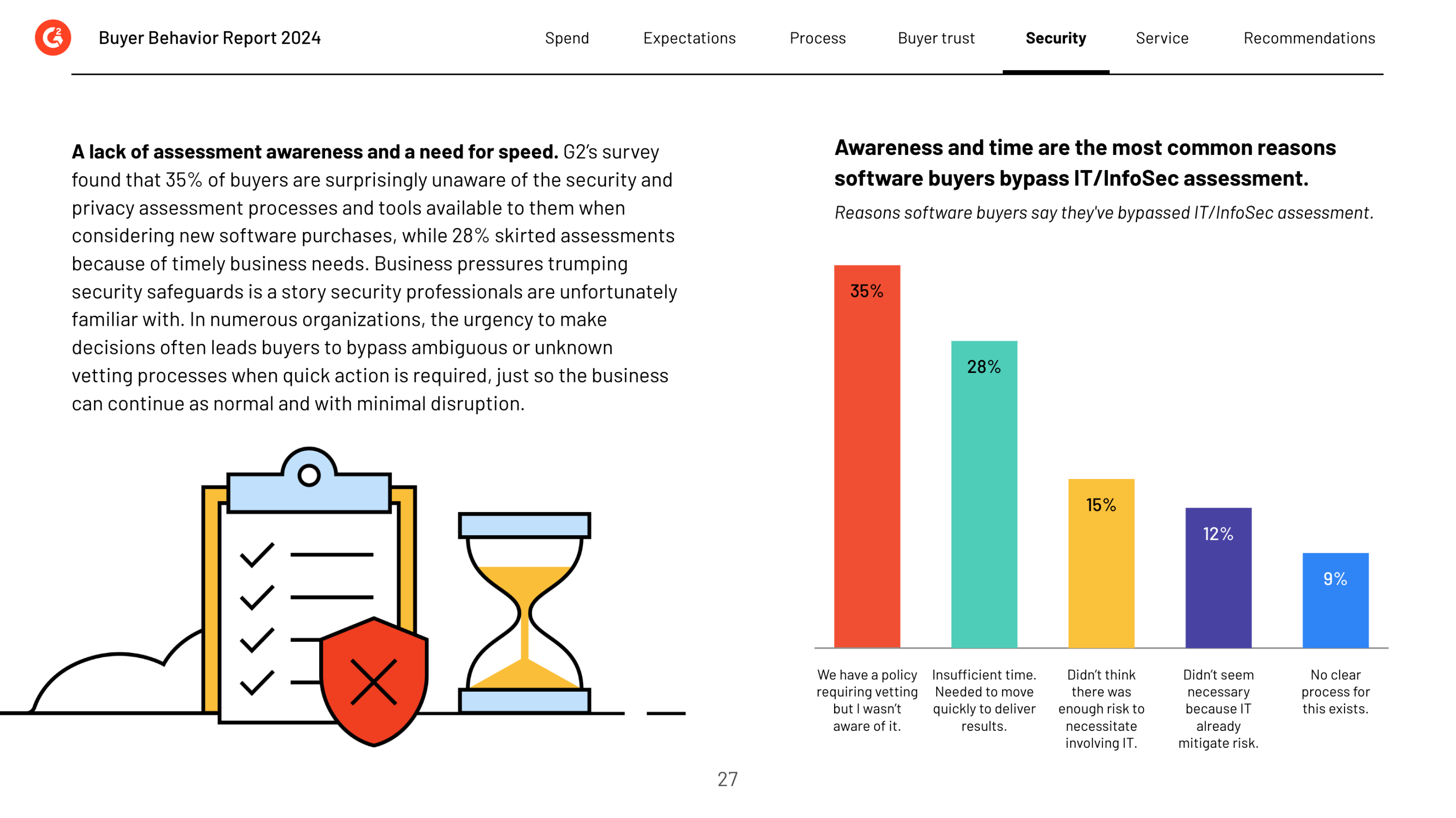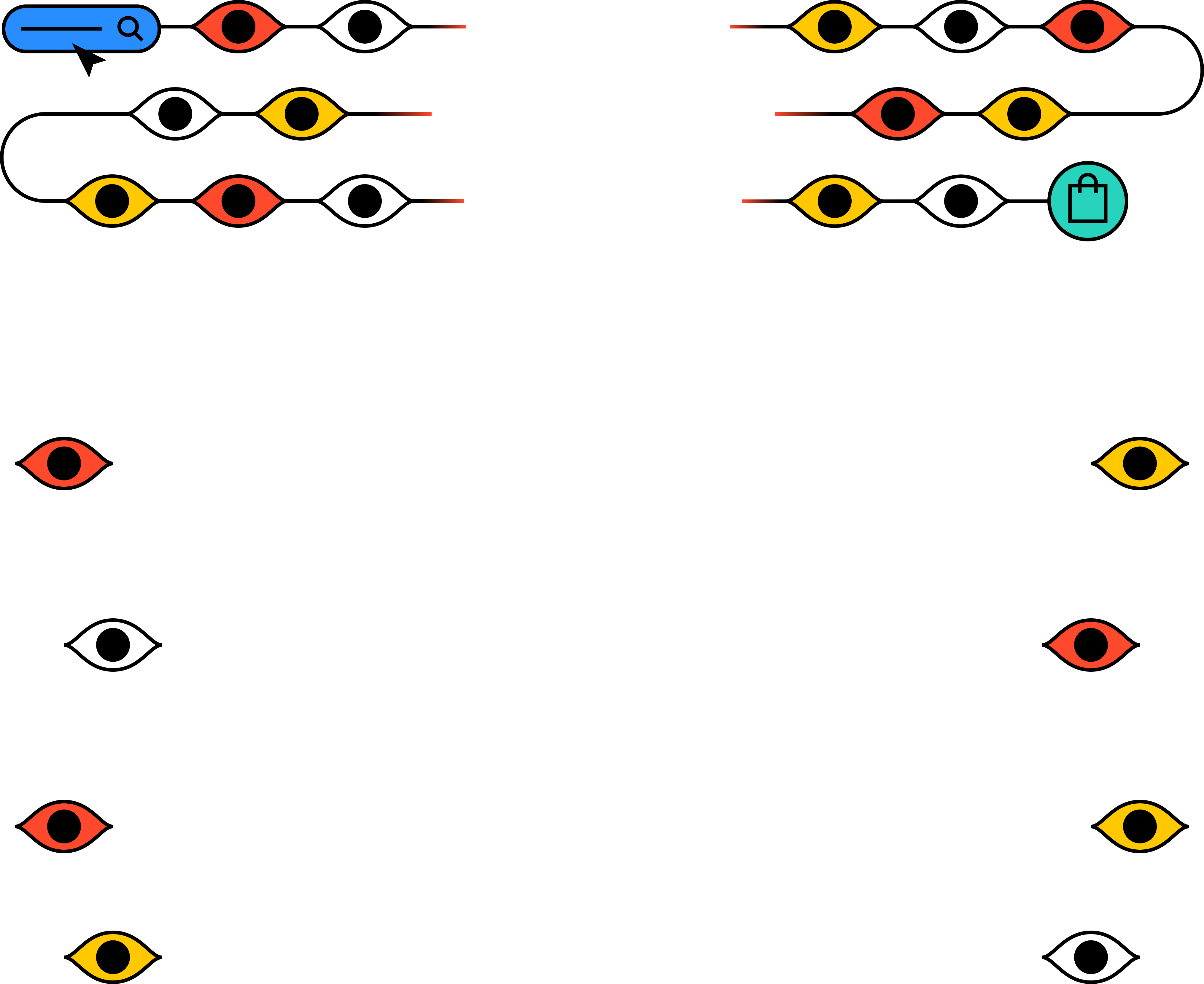
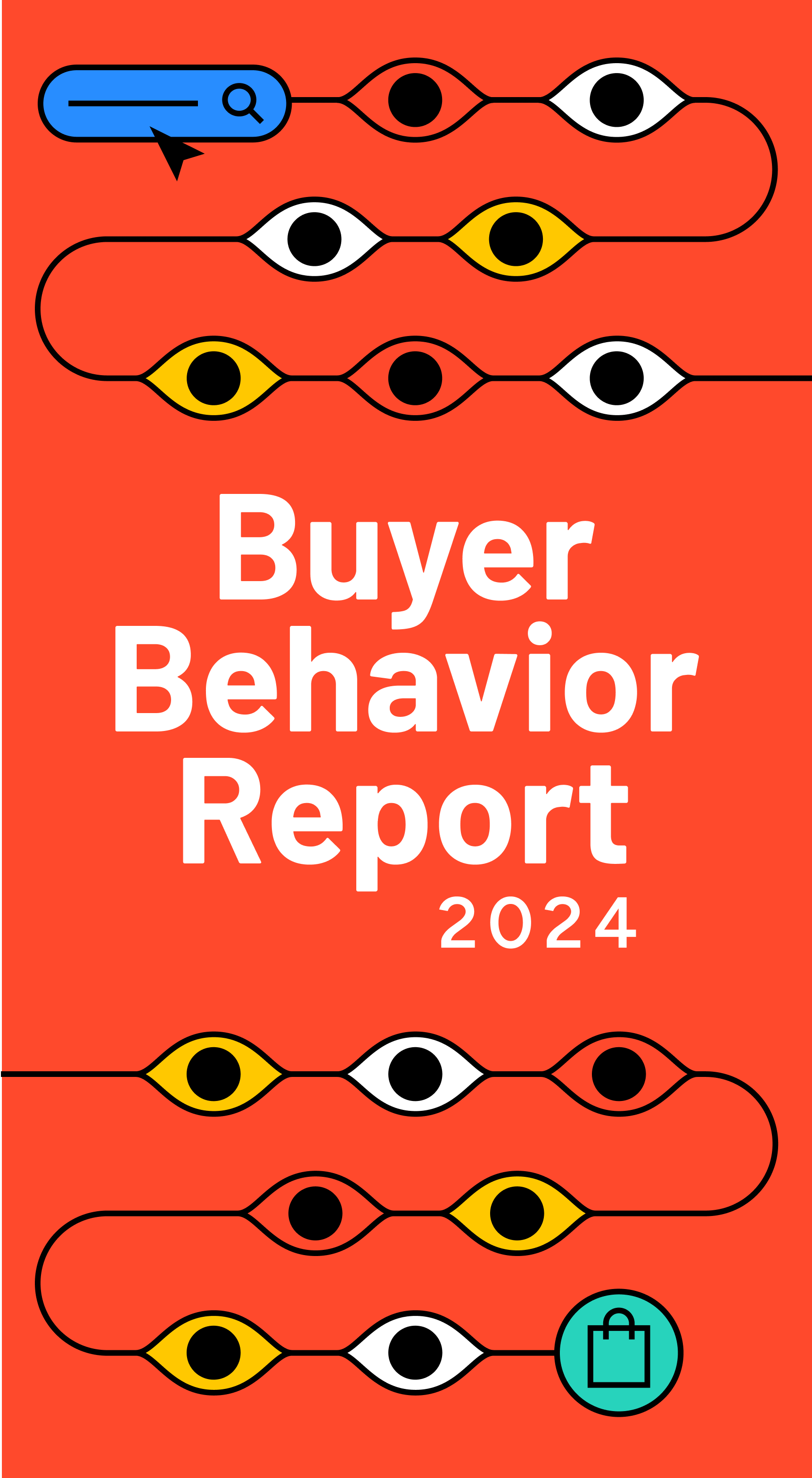
Proving Value in the Age of AI
What CMOs Need to Know
Every year, we survey global B2B buyers about their challenges, priorities, and attitudes related to software purchasing. As a marketer and self-proclaimed software nerd, I personally love digging into the findings to see what trends remain, emerge, or disappear.
This isn’t all just for fun though. Understanding what matters most – or doesn’t matter at all – to buyers today informs my team’s approach, helping us more effectively engage with our customers and prospects.
This year’s Buyer Behavior Report from G2, based on responses from over 1,900 respondents, is chock-full of data, insights, and takeaways. Call me biased, but I believe the full report is worth the read. But as a favor for my fellow marketing leaders, who I know are tight on time, I’ve pulled out what I found to be most pertinent.
I’d love to hear what findings resonate with you most, or anything that surprised you. Feel free to let me know with a message on LinkedIn or email (palmer@g2.com).
Palmer Houchins
VP, Head of Marketing at G2
